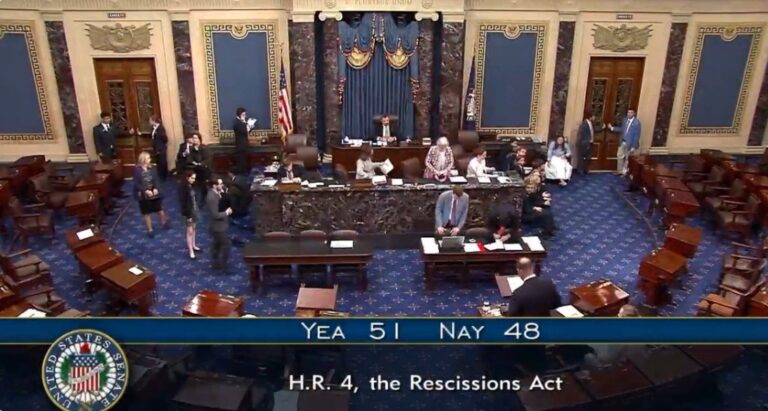By MICHAEL TAVOLIERO
Taking Back Alaska Series
Alaska’s education system is in crisis. But this is not merely a crisis of funding or staffing. It is a crisis of structure, accountability, and purpose. The Anchorage School District’s recent warnings about layoffs, federal grant freezes, and unstable budgeting reflect a deeper failure that cannot be solved with temporary appropriations or political theatrics.
We need structural reform rooted in the very framework our state constitution provides. The framers of Alaska’s Constitution envisioned a model of efficient, locally accountable governance that minimizes administrative duplication and consolidates public services under general-purpose governments. That vision has been abandoned.
The status quo is unsustainable and self-destruction. The Anchorage School District (ASD) operates with a budget exceeding $770 million and employs over 6,000 staff. Yet fewer than 30% of students are proficient in core subjects like math and English. This is not due to lack of funding. It is due to misalignment between spending and student outcomes. Centralized bureaucracy, rigid employment structures, and a compliance-driven culture have created a system that protects itself at the expense of the students it serves.
Meanwhile, the Department of Education and Early Development (DEED) enforces one-size-fits-all mandates across a state with unmatched geographic, cultural, and economic diversity. Rural districts suffer the most, burdened by inflexible policies and high costs with few results.
A constitutional alternative led by parent-centered reform focuses on students’ futures, not the preservation of outdated bureaucracies or centralized control that burden families and educators alike. It is time to return to the constitutional blueprint laid out in Article X of the Alaska Constitution. That blueprint did not mandate permanent school districts. In fact, it envisioned their gradual absorption into boroughs to streamline governance. The goal was not to dismantle education, but to make it more responsive, more accountable, and more equitable.
I propose abolishing DEED and dissolving Alaska’s current network of school districts. In their place, we should institute Education Savings Accounts (ESAs), enabling parents to direct public funds to the education services that best meet their children’s needs. This includes public, private, religious, charter, vocational, and online programs.
The Supreme Court’s recent decisions in Espinoza v. Montana Department of Revenue and Carson v. Makinaffirm that states offering educational funding cannot discriminate against religious options. With ESAs, Alaska can honor constitutional public-purpose funding (Article IX, Section 6), while unleashing innovation and flexibility desperately needed in a state as complex as ours.
Borough governments, not DEED, would retain a minimal administrative role—overseeing budgeting and ensuring transparency, while parents, teachers, and communities regain control over education delivery.
No matter how you peel this onion, the real crisis in Alaska is cranialrectalinversion; a chronic case of heads buried so far in antiquated policies and structural stagnation that clear vision is no longer possible. It’s like a twisted retelling of Sisyphus meets Groundhog Day: the state keeps pushing the same bloated, underperforming education system up the hill, expecting different results, only to watch it roll back down in the form of dismal student outcomes, teacher burnout, and bureaucratic bloat. The lesson? No matter how noble the intent, doing the same thing over and over while ignoring constitutional solutions isn’t reform. It’s delusion dressed in a policy memo.
Superintendent Jharrett Bryantt’s warning letter portrays Alaska’s education funding issues because of external forces and legislative unpredictability. Yet it conveniently ignores the internal stagnation plaguing our education system. For decades, districts like ASD have clung to obsolete policies and procedural and administrative gut that prevent adaptation, innovation, and student-centered reform. Layer upon layer of outdated mandates, inflexible staffing formulas, and centralized procurement chains create systems so rigid they crumble under even minor fiscal pressure.
If public education truly operated in the interest of students, reform would have come long ago. Instead, leadership continues to double down on defunct structures, seeking more money to sustain inefficiency rather than reimagining how education is better delivered. Families are not just victims of budget cuts. They are victims of an education bureaucracy unwilling to evolve.
Moreover, Superintendent Bryantt’s letter makes no mention of one of the most consequential shifts in national education policy currently being proposed, namely, the dismantling of the U.S. Department of Education and redirecting its funds through block grants directly to the states. President Donald Trump and others have advocated this model as a way to reduce federal overreach and empower state and local education systems. For Alaska, this would mean increased flexibility, reduced bureaucracy, and more locally responsive education funding. The omission of this potential policy shift in the superintendent’s letter is telling and symptomatic of a leadership class more concerned with preserving the status quo than exploring bold alternatives.
In the spirit of open dialogue, we welcome and address the concerns of those who may question this approach, recognizing that thoughtful critique strengthens meaningful reform.
Objection 1: This is just privatization by another name.
No. It is parental empowerment. ESAs don’t replace public education; they fund students directly, allowing them to access the best education possible, whether in a public or private setting. Public schools that deliver value will still thrive—but now they must compete for students based on performance, not political protection.
Objection 2: This removes accountability.
In fact, it enhances accountability. Who is more accountable than parents overseeing their child’s education? Under the current system, unelected bureaucrats and remote administrators answer to no one. ESAs realign authority to those who care the most: families.
Objection 3: It disadvantages rural students.
The opposite is true. Under ESAs, rural families can access digital learning, satellite programs, tutors, and vocational training tailored to their community’s needs, not a one-size-fits-all model crafted by government functionaries.
Objection 4: It undermines unions and educators.
It changes their role. Teachers become free agents who can start microschools, teach independently, or join schools that align with their values. Great educators will have more opportunities, not less.
A New Educational Compact
It’s time to end the cycle of bureaucratic self-preservation. We can no longer protect a system that produces underperformance, wastes resources, and erodes community trust. Let’s replace it with a model that places students at the center, parents in control, and teachers in empowered roles.
Anchorage and Alaska have a choice: continue with structural dysfunction or embrace a bold realignment with our constitutional foundations. The moment demands leadership. Let’s build the education system our children deserve.














